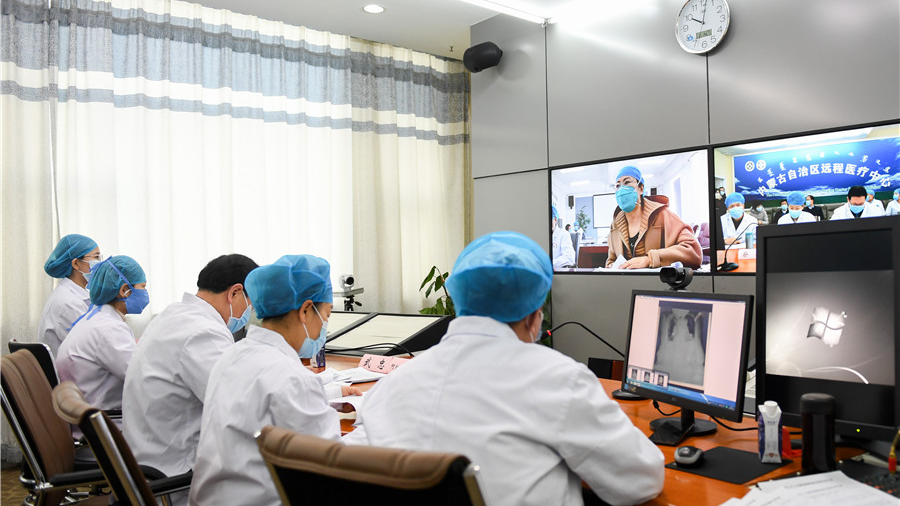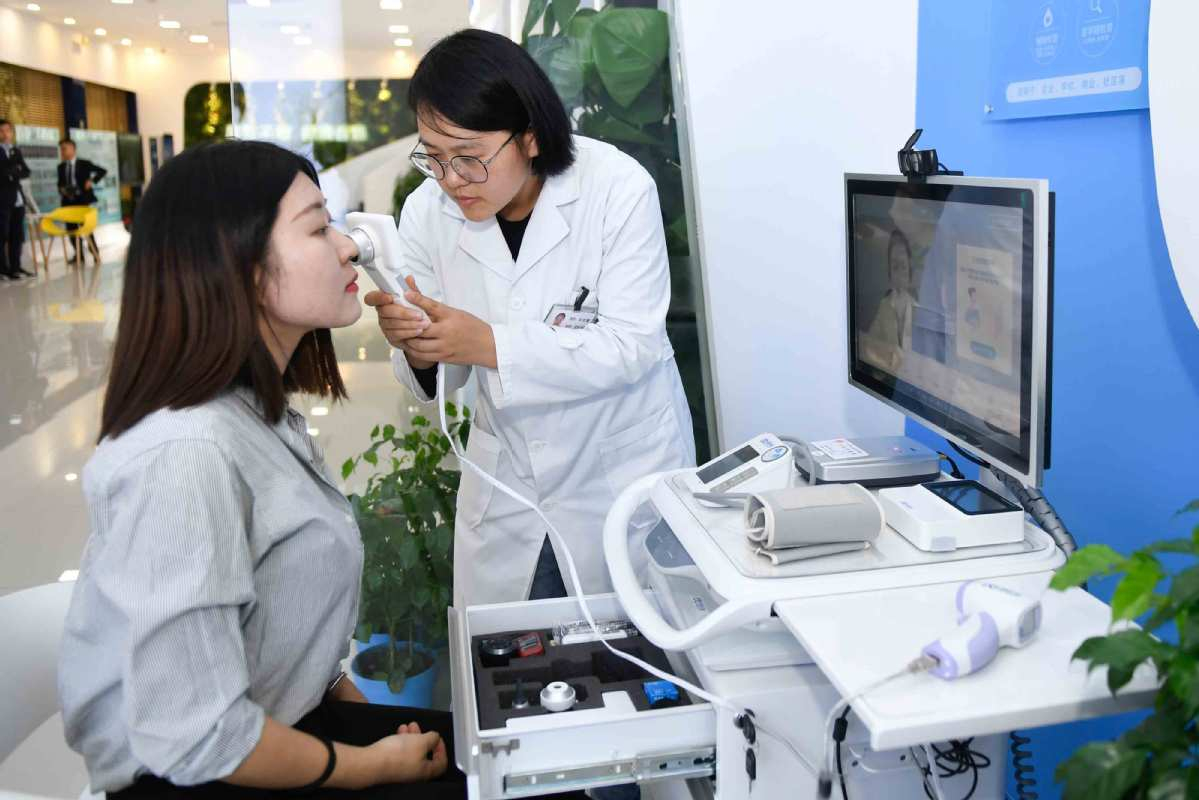
Medical experts hold online consultations at the Telemedicine Center of the Inner Mongolia Autonomous Region in Hohhot, February 14, 2020. /Xinhua
Medical experts hold online consultations at the Telemedicine Center of the Inner Mongolia Autonomous Region in Hohhot, February 14, 2020. /Xinhua
Editor's note: Vera Lucia Raposo is an associate professor at the Faculty of Law of Macau University, China and an auxiliary professor at the Faculty of Law of Coimbra University, Portugal. The article reflects the author's opinions and not necessarily the views of CGTN.
COVID-19 changed our life in more ways that we could ever imagine. One of its many disruptions to our normal routine is related to health care delivery.
During a pandemic, something as common as visiting local hospitals to see a doctor becomes a challenge. Many parts of the world are now in mandatory quarantine, only allowing urgent medical visits. Even if residents manage to reach a health facility, it could be crowded with highly infectious patients.
Now is the time to restrict any kind of personal contact (social distancing) to break the chain of infection, including in the domain of health care. However, people continue to have headaches, and skin rashes, and stomach pains… and they need medical assistance. Telemedicine provides the solution.
Telemedicine refers to the practice of medicine at distance, by making use of different technological resources: telephone calls, emails, video conferences, apps, and other means of communication. Patients can interact with a health professional, either in real time (such as during a phone conversation) or with a time lapse (by email). Telemedicine allows the performance of various medical acts.
One of its most used modalities is teleconsultation, which intends to be a replica of face-to-face consultations. Telemonitoring is also widely used to help at distance people suffering from chronic diseases or even COVID-19 individuals, whose situation does not require hospitalization.
There are, of course, hidden perils in telemedicine, including the loss of personal contact and consequent lack of trust, privacy breaches resulting from online data theft (a particularly concerning situation since it involves health data), wrong diagnosis made at distance and consequent injuries for patients, medical mistakes derived from the lack of information provided to health care providers, potential patient deception during tele-encounters (namely people aiming to get access to illicit substances by using tele-prescription).
All these are real. However, these difficulties can be solved by settling a proper regulatory framework for telemedicine and adjusting the medical standard of care. Moreover, during a pandemic, telemedicine might be the only way to guarantee regular medical care to the community.
Telemedicine is not new for China. In the framework of the massive health reforms that had been carried out in the country (Health China 2000), an impressive telemedicine network has been implemented. It is almost a necessity for a country with such a large dimension, where many distant areas do not have access to some medical specialists, or even to general practitioners.
In 2018, China's National Health Commission (NHC) issued three important administrative measures for telemedicine: Measures for the Administration of the Internet-based Diagnosis and Treatment; Measures for the Administration of the Internet Hospitals; and Measures for the Administration of Telemedicine. Among its various rules what stands out is the ban on online diagnosis and the imposition of a physical encounter between the doctor and patient before engaging in telemedicine.

A check-up at Wuzhen Internet Hospital in Tongxiang, Zhejiang Province, November 2018. /Xinhua
A check-up at Wuzhen Internet Hospital in Tongxiang, Zhejiang Province, November 2018. /Xinhua
Nowadays the practice is common, and business is flourishing.
One of the country's largest health insurers, Ping An, launched the platform Good Doctor in 2014, covering a wide range of services 24 hours a day, and allowing doctors to consult the health records of patients online. During the COVID-19 outbreak the number of its users astonishingly increased.
E-commerce giant JD.com has its own e-health platform, JD health, which also offers telemedicine. Recently, China's National Health Commission recognized the value of these platforms, especially in helping China fight the virus.
The Chinese example will probably be emulated by other countries. In the U.S., Medicare (a national health insurance program) recently announced that it will expand its coverage to telemedicine, namely to help the elderly access medical assistance without putting themselves at risk.
The measure has the full support of U.S. President Donald Trump and is likely to be followed by other insurers. Europe has been reluctant to use telemedicine, but the challenges posed by COVID-19 might change that.
This pandemic will eventually go away. Despite the many losses humankind will face, there will also be achievements and discoveries. Telemedicine might be one of them. Very likely it will survive this episode and become a part of our daily life.
For patients, it will change traditional doctor-patient relationships. For doctors, it will shape the medical standards of care. For lawyers, it will influence the way we understand medical liability. For entrepreneurs, it will create new business opportunities.
(If you want to contribute and have specific expertise, please contact us at opinions@cgtn.com.)